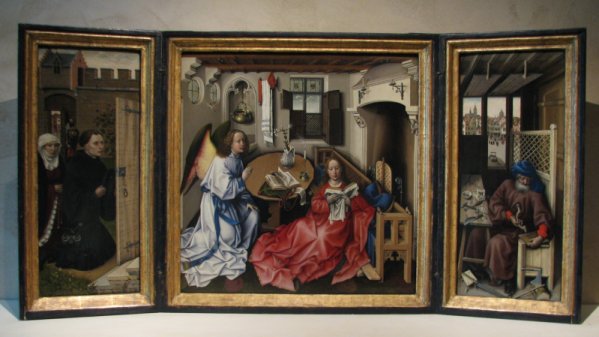At the risk of creating just such a jarring experience I show some of the paintings, seen in a visit to New York, that have inspired me in the past. One of the results of the experience was a reinforcement of something I often tell my students: "If it was easy, anybody could do it."

Much has been made of Vermeer's reliance on optical devices, such as the camera lucida, to produce his paintings. I think it's like an athlete taking performance enhancing drugs. Not many people can hit a major league fastball no matter how many steroids they take. Vermeer hits home runs.

My favorite painting. It does everything a painting can do--represent, symbolize, narrate, design, etc. and does it well. It's a jewel.

When I first saw this image as a child I was enchanted by the light from the windows falling on the ground. You can't do that with a yellow crayon.

Synesthesia is a neurologically based phenomenon in which stimulation of one sensory or cognitive pathway leads to automatic, involuntary experiences in a second sensory or cognitive pathway. This doesn't fit the neurological definition, but it's a painting you feel with your eyes.

Big yellow negative shapes.

Holbein has always been a hero. I really admired these little portraits.

Sheeler also used optical devices. No one complained.

This is a very small section from a huge painting of the Andes. You can find dozens of such "pictures within a picture" in Church's work.

Rembrandt portraits often have more personality and presence than actual people you meet.

Dad, I love to read about the things you love. Sometimes I forget you are an artist, and sometimes I just don't know what it means to be one.
ReplyDeleteI'm supposed to believe that you love to read? Give me a break.
ReplyDeleteI appreciate the appreciating, and enjoy the perspective (yours, theirs, etc.)
ReplyDelete